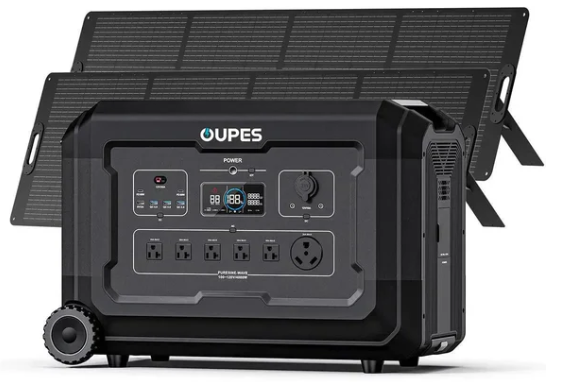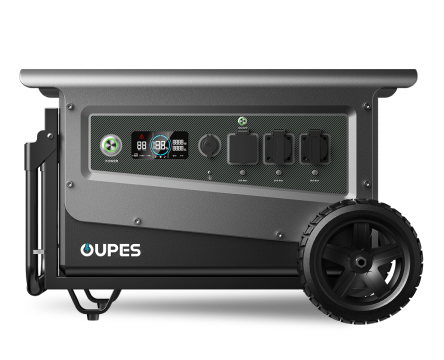
Table of Contents
- Introduction: The Solar Energy Landscape in 2026
- Why Solar Energy Remains Relevant
- Solar Energy Costs in 2026
- Calculating the Return on Investment (ROI)
- Government Incentives and Tax Credits
- The Role of Portable Solar Power Stations
- Comparison: Traditional Solar Systems vs. Portable Solar Generators
- Challenges and Considerations
- Future Outlook for Solar Energy
- FAQ
Introduction: The Solar Energy Landscape in 2026
As global energy costs continue to rise and environmental awareness grows, solar energy remains one of the most promising renewable solutions. In 2026, solar technology is more efficient, accessible, and affordable than ever. However, the question many homeowners and outdoor enthusiasts ask is — is solar energy still a worthwhile investment?
This article explores the state of solar energy in 2026, analyzing its financial, environmental, and practical value. It also looks at how portable solar power stations and solar generators — such as those offered by brands like OUPES — play an increasing role in off-grid and emergency power solutions.
Why Solar Energy Remains Relevant
1. Rising Electricity Costs
According to the U.S. Energy Information Administration (EIA), residential electricity prices have risen by nearly 20% over the past five years, and the upward trend continues in 2026. Solar power allows homeowners to produce their own electricity and reduce dependence on utility companies.
2. Improved Solar Panel Efficiency
Modern solar panels now exceed 24% efficiency, compared to 15–17% a decade ago. This means fewer panels can generate more energy, reducing installation space and improving overall ROI.
3. Environmental Sustainability
Each kilowatt-hour (kWh) of solar electricity offsets approximately 0.85 pounds of CO₂ emissions. Investing in solar energy helps reduce carbon footprints and supports global sustainability goals.
Solar Energy Costs in 2026
The cost of solar energy systems has dropped dramatically. In 2026, the average cost per watt is about $2.30–$2.60 before incentives — nearly 70% cheaper than in 2010. Here’s a comparison table illustrating cost trends over time:
| Year | Average Cost per Watt | System Size (kW) | Average Total Cost (Before Incentives) |
|---|---|---|---|
| 2010 | $8.00 | 6 | $48,000 |
| 2020 | $2.80 | 6 | $16,800 |
| 2026 | $2.40 | 6 | $14,400 |
As manufacturing technology improves and lithium-based storage becomes more efficient, total system costs continue to decline. Additionally, the popularity of plug-and-play solar generators makes solar adoption easier for renters and off-grid users.
Calculating the Return on Investment (ROI)
1. Payback Period
On average, the payback period for residential solar systems in 2026 ranges from 6 to 9 years, depending on local energy rates and available incentives. After this period, the system produces virtually free electricity for up to 20 more years.
2. Energy Savings
A typical U.S. household using 900 kWh per month can save between $1,200 and $2,000 annually in electricity costs. Over 25 years, that amounts to savings exceeding $40,000.
3. Added Property Value
Studies from the National Renewable Energy Laboratory (NREL) show that homes with solar installations sell for about 4–6% more than those without.
Government Incentives and Tax Credits
The Federal Solar Investment Tax Credit (ITC) continues through 2032, offering a 30% tax credit on the total installation cost. Several states and utilities also offer rebates or performance-based incentives.
In 2026, energy storage systems — including solar batteries and portable power stations — also qualify for federal tax credits if connected to solar arrays.
The Role of Portable Solar Power Stations
While rooftop systems serve as long-term investments, portable solar generators and power stations provide flexibility, especially for off-grid living, RV use, or emergencies. These compact systems integrate solar panels, LiFePO₄ batteries, and inverters into one unit, offering plug-and-play energy anywhere sunlight is available.
Advantages of Portable Solar Systems
- Instant backup power during outages.
- Zero fuel, noise, or emissions.
- Rechargeable via solar panels, car, or wall outlet.
- Ideal for camping, RV travel, and home emergencies.
Brands like OUPES are developing advanced portable systems that complement home solar setups — bridging the gap between full installations and mobility-based solutions.
Comparison: Traditional Solar Systems vs. Portable Solar Generators
| Feature | Rooftop Solar System | Portable Solar Generator |
|---|---|---|
| Installation | Permanent, requires professional setup | Plug-and-play, no installation needed |
| Power Output | 3–10 kW for home use | 300–4000W, ideal for small appliances |
| Mobility | Fixed at one location | Highly portable, for travel or emergencies |
| Cost | $12,000–$20,000 | $500–$3,000 |
| Maintenance | Low but requires periodic cleaning | Minimal to none |
| Use Case | Whole-home energy generation | Outdoor power and backup |
Challenges and Considerations
1. Weather Dependence
Solar energy production depends on sunlight. Although technology improvements like bifacial panels and MPPT controllers optimize generation, cloudy or rainy conditions can reduce efficiency.
2. Initial Cost
Despite price declines, upfront costs remain a barrier for some households. Financing and leasing programs, however, make solar ownership increasingly accessible.
3. Energy Storage
Battery systems — including LiFePO₄-based storage — are key for achieving energy independence. These systems allow users to store daytime energy for nighttime use or grid outages.
Future Outlook for Solar Energy
According to International Energy Agency (IEA) projections, solar capacity will grow by over 50% by 2026, making it the fastest-growing source of electricity worldwide. Innovations in perovskite panels, AI-driven energy management, and hybrid systems will continue to enhance adoption.
Integration with Smart Grids
Smart grid systems will allow households to sell excess solar power back to the grid, further improving ROI and grid stability.
Decentralized Power Solutions
Portable solar generators and home batteries enable micro-energy ecosystems — empowering consumers to live partially or fully off-grid.
Environmental and Economic Impact
With global commitments toward net-zero emissions, solar energy remains central to the clean energy transition. By 2030, the solar industry is projected to support over 1.5 million U.S. jobs and contribute significantly to local economies.
FAQ
1. Is solar energy still a good investment in 2026?
Yes. Despite evolving technology, solar remains financially and environmentally rewarding, offering strong ROI and long-term stability.
2. What’s the payback period for solar systems?
Most systems recoup their cost within 6–9 years, depending on local energy rates and incentives.
3. Do portable solar generators replace rooftop systems?
Not entirely. Portable systems complement rooftop installations by providing backup power and off-grid flexibility.
4. Are there incentives for solar energy in 2026?
Yes. The 30% Federal Investment Tax Credit (ITC) still applies, and some states offer additional rebates.
5. Is it worth combining solar panels with battery storage?
Absolutely. Pairing solar panels with modern battery technology — such as LiFePO₄ — ensures energy security during outages and increases self-consumption.




























